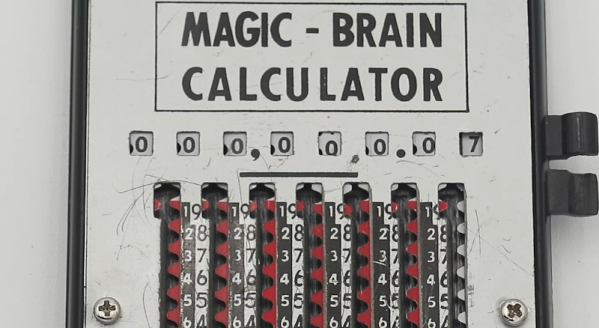If you predate the pocket calculator, you may remember slide rules. But slide rules take a a little skill to use. There was a market for other devices that were simpler or, in some cases, cheaper. One common one was the “magic brain” or Addiator which was a little metal box with some slots that could add numbers. However, using clever tricks it could also subtract and — in a fashion — multiply. [Our Own Devices] has a teardown of the device you can see in the video below. It is deceptively simple, and the description of how it works is at least as interesting as the peek inside.
We remember these on the market and, honestly, always thought they were simple tally mechanisms. It turns out they are both less and more than that. Internally, the device is a few serrated sheet metal strips in a plastic channel. The subtraction uses a complement addition similar to how you do binary subtraction using 2’s complement math. Multiplication is just repetitive addition, which is fine for simple problems.



















